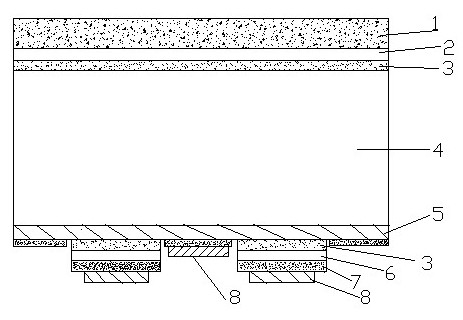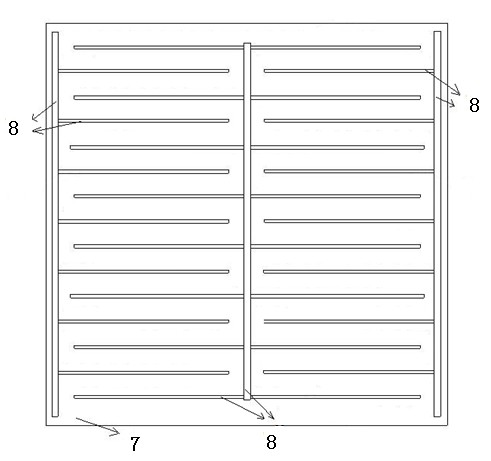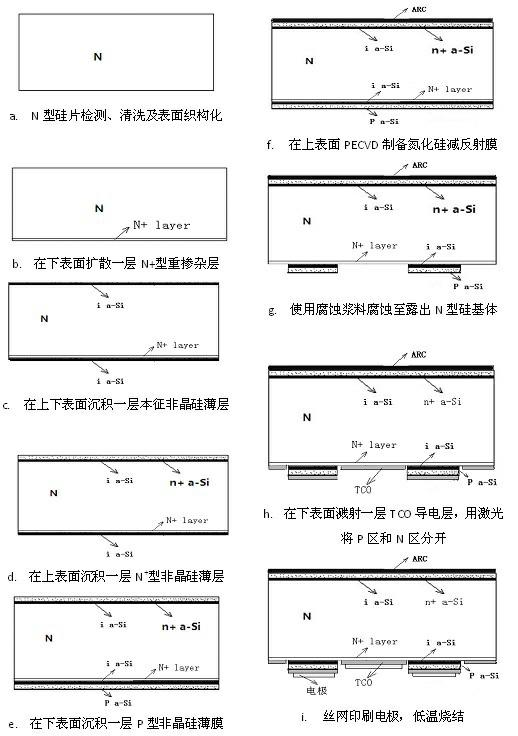Back contact heterojunction solar battery based on N-type silicon slice
A solar cell and heterojunction technology, applied in the field of solar cells, can solve problems such as increasing the density of carrier recombination defects, affecting the collection and transmission of photogenerated current, and affecting the conversion efficiency of solar cells, so as to simplify the appearance requirements and save production time , the effect of improving conversion efficiency
- Summary
- Abstract
- Description
- Claims
- Application Information
AI Technical Summary
Problems solved by technology
Method used
Image
Examples
Embodiment 1
[0028] N-type crystalline silicon 4 is selected from N-type single crystal silicon wafers, and the surface of N-type crystalline silicon 4 is pre-cleaned and surface textured by using semiconductor cleaning technology. The thickness of the N-type crystalline silicon 4 used is 200um, the resistivity is 0.5~3Ω.cm, the silicon dioxide layer on the surface of the N-type crystalline silicon 4 is removed with 1~5% hydrofluoric acid, and the concentration is less than 3% NaOH and IPA (isopropanol) mixed liquid at about 80°C to prepare pyramid-shaped suede. Increase the absorption of sunlight, increase the area of the PN junction, and increase the short-circuit current. The subsequent N-type crystalline silicon 4 is cleaned by an acid cleaning process and dried. Put the N-type crystalline silicon 4 into the diffusion furnace after texturing (POCl 3 ) at about 850°C for single-sided heavy phosphorus diffusion, forming a layer of N+ crystalline silicon layer 5 on the lower surface o...
PUM
 Login to View More
Login to View More Abstract
Description
Claims
Application Information
 Login to View More
Login to View More - R&D
- Intellectual Property
- Life Sciences
- Materials
- Tech Scout
- Unparalleled Data Quality
- Higher Quality Content
- 60% Fewer Hallucinations
Browse by: Latest US Patents, China's latest patents, Technical Efficacy Thesaurus, Application Domain, Technology Topic, Popular Technical Reports.
© 2025 PatSnap. All rights reserved.Legal|Privacy policy|Modern Slavery Act Transparency Statement|Sitemap|About US| Contact US: help@patsnap.com



